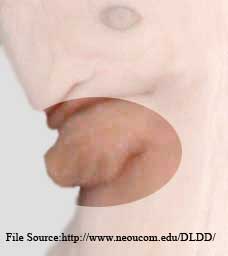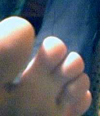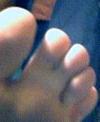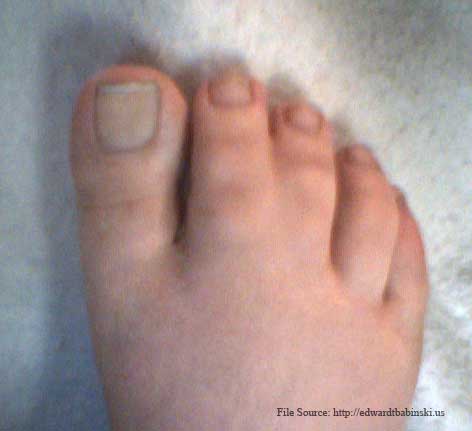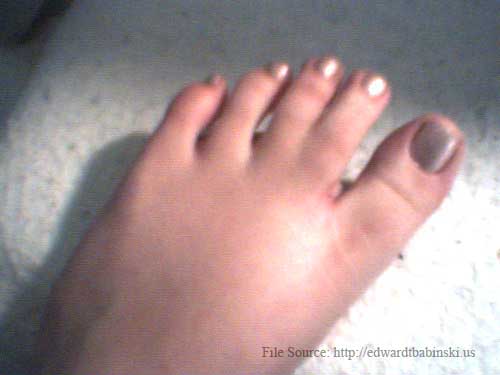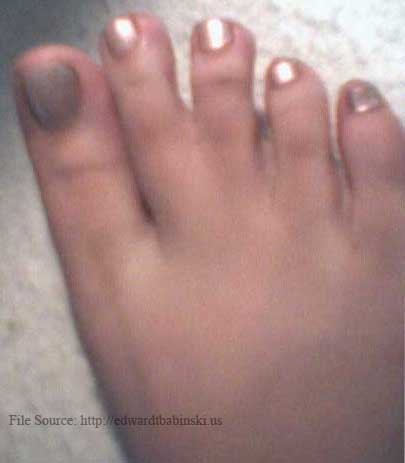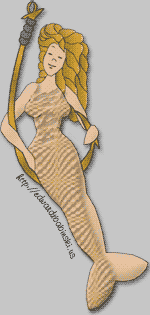FIRST VISUAL EXAMPLE
Photos of the skulls of extinct primates (unfortunately, you must scroll down a ways to see them) with cranial capacities listed right beside them. Demonstrates VISUALLY that the cranial capacities are not unbridgable. And even creationists cannot agree on which side of the ape-human line the "inbetween" skulls fall.
Also see this article that cites creationist disagreements as to which side of the line on which each skull falls.
SECOND VISUAL EXAMPLE
Creationists are right, the Cambrian included vertebrates, but SEE what kinds (the simplest vertebrates of all) that it included. Take a VISUAL LOOK at the "vertebrates" in the Cambrian and compare them to the "vertebrates" that followed during successive geological eons.
Earliest vertebrates
Jonathan Wells in ICONS OF EVOLUTION seems to ignore a growing body of literature showing that there are indeed organisms of intermediate morphology present in the Cambrian record and that the classic "phyla" distinctions are becoming blurred by fossil evidence (Budd, 1998, 1999; Budd and Jensen, 2000). Many of the "major changes" in the Cambrian were initially minor ones. Through time they became highly significant and the basis for "body-plans." For example, the most primitive living chordate Amphioxus is very similar to the Cambrian fossil chordate Pikia.
Both are basically worms with a stiff rod (the notochord) in them. The amount of change between a worm and a worm with a stiff rod is relatively small, but the presence of a notochord is a major "body-plan" distinction of a chordate. Further, it is just another small step from a worm with a stiff rod to a worm with a stiff rod and a head (e.g., Haikouella; Chen et al., 1999) or a worm with a segmented stiff rod (vertebrae), a head, and fin folds (e.g., Haikouichthyes; Shu et al., 1999). Finally add a fusiform body, fin differentiation, and scales: the result is something resembling a "fish".
But, as soon as the stiff rod evolved, the animal was suddenly no longer just a worm but a "chordate" -- representative of a whole new phylum. Thus these "major" changes are really minor in the beginning, which is the Precambrian-Cambrian period with which we are concerned. Before the Cambrian Explosion, there were lots of "worms," now preserved as trace fossils (i.e., there is evidence of burrowing in the sediments).
The period before the Cambrian is known as the Pre-Cambrian, and it contains traces of worms and some simple critters that look like they might be related to the trilobites that dominated the period that followed, i.e., the Cambrian period.
FROM GLEN MORTON'S ARTICLE ON WHEN THE VARIOUS ANIMAL AND PLANT PHYLAS AROSE ACCORDING TO THE FOSSIL RECORD (NOT GOOD NEWS FOR CREATIONISTS)
Bomakellia, a Vendian creature shows amazing similarities to trilobites, yet it is a precambrian creature. Here is a picture of Bomakellia kelleri.
And Spriggina floundersi, another Vendian animal, also shows similarities to the trilobite in the head region. It can be seen here.
For comparison with a trilobite.
For creationists to claim that there is no evidence of phyla level transitional forms, is wrong. There is evidence.
Berkeley has posted an interesting display of when the various phyla appear.
When one analyses the first appearance data of that chart, they find the following (with one addition of Cycliophora which isn't on their list and the moving of 3 additional definite Vendian phyla from the Cambrian to the Vendian as noted earlier on this page):
Period # phyla which appear in period
Recent 12
Oligocene 1
Eocene 1
Jurassic 1
Carboniferous 3
Devonian 1
Ordovician 1
Cambrian 9
Vendian 4
(note that the Berkeley chart is inconsistent with the data presented here. The phyla found in the Precambrian would move Cambrian creatures back to the Vendian. This would not affect the way I use the data in the next paragraph.)
If one considers the Vendian/Cambrian animals as constituting the Cambrian Explosion, then we have 13 phyla appearing in the Cambrian Explosion and 20 AFTER the Cambrian Explosion. While one can assume that the 13 phyla which have no fossil record arose in the Cambrian, assumptions are NOT data. The plain fact is that the Cambrian Explosion doesn't even represent the majority of the phyla. Will these other phyla be found in the Cambrian? Maybe. But one can't rationally assume what the future holds in order to argue to his case.
And if one adds the plant phyla which appear after the Cambrian (why plant phyla should be excluded as Ray seems to imply is beyond me. They ARE phyla after all (Bohlin, 2001, p. 138)), one gets the following chart.
Period # total phyla which appear in period
Recent 13
Eocene 2
Cretaceous 2
Jurassic 1
Triassic 3
Carboniferous 5
Devonian 4
Silurian 1
Ordovician 1
Cambrian 9
Vendian 4
(same note as above concerning phyla in the Vendian)
This yields Cambrian Explosion 13, Post-Cambrian 32! Sounds like a football score! And given that 13 phyla first appear within the past 10,000 years (having no fossil record) one could, if one wanted, claim that we are in another explosion. I wouldn't make that claim but it would fit within the data. To claim that all or even the majority of animal phyla appear in the Cambrian is demonstrably FALSE yet the claim is blindly made being repeated endlessly by apologist to apologist with no one even questioning the validity of the statement.
So why did so many phyla 'suddenly' appear in Cambrian Seas? Basically, it was because of the evolution of hard shells that gave an animal a much greater probability for preservation. Hard shells are more easily fossilized than soft flesh. But why did the animals of the Cambrian evolve shells? There are several schools of thought; I will mention only a few of them. Probably all of the suggested causes had some influence on the development of hard skeletons. Bengston and Zhao (1992, p. 367) write: "The evolutionary mechanisms behind the origin of mineralized skeletons in animals at the Precambrian-Cambrian transition about 550 million years ago have been vigorously debated. One school holds that skeletal biomineralization began as a detoxification process, another that it evolved mainly to promote biomechanically efficient constructions for locomotion, feeding, and so on, yet another that it arose as a response to predation."
THIRD VISUAL EXAMPLE
VISUAL evidence for snake evolution as seen in photos in a letter published in NATURE magazine. You can plainly see the python's pelvic girdle with all the basic parts of a tetrapod's pelvis, AND ALSO SEE limb buds on the python embryo (that are later reabsorved). The author of the piece includes pics of leg buds in the chick embryo for comparison.
"Developmental basis of limblessness and axial patterning in snakes" by Martin J .Cohn & Cheryll Tickle, NATURE VOL 399 3 JUNE 1999
Other online articles feature photos of small fossilized limbs found on the earliest known relatives of what was to later become the snake family: "How the snake lost its legs" Discover, July, 1997 by Carl Zimmer
"...How did snakes come to be? The distinctiveness of the animals obscures their ancestry. Their scales, eggs, and subtle features of their skulls show them to be descended from lizards, but it's been difficult to link them to any specific group. Unable to pin them down taxonomically, paleontologists have been able to construct only the flimsiest of scenarios for how snakes lost their limbs. But this confusion may now dissolve, thanks to a 100-million-year-old fossil of a snake with legs. The three-foot-long creature, Pachy rachis problematicus (meaning "problematic thick-ribbed animal"), was discovered in the late 1970s by quarryworkers 12 miles north of Jerusalem. After a preliminary study, Hebrew University herpetologist George Haas suggested that while the fossil looked serpentine, there was no evidence that it was closely related to snakes. There matters rested until 1996, when Michael Lee of the University of Sydney in Australia and Michael Caldwell of the Field Museum in Chicago came to Jerusalem to study the fossil more thoroughly. They exposed more of the fossil from its limestone slab and carefully compared its skeleton with those of snakes and lizards. "The first thing you've got to do is look at every possible animal it could be related to, and Haas didn't have access to lots of primitive snake material," says Lee. He and Caldwell conclude that Pachyrachis possesses many characteristics unique to snakes. Its body, for example, is long and sinuous: it has 140 vertebrae in its trunk; most lizards have just 25. And while lizards have open brain cases, Pachyrachis, like snakes, has a completely sealed one. Its jaws are extraordinarily flexible: the lower jaw doesn't fuse at the chin, so the two halves can bend out to the sides to swallow big prey. Many hinges lie along the length of both the upper and lower jaws to expand the gape even more. "They're snakes, no doubt about it," says Lee. Yet Pachyrachis still held on to some primitive bits of anatomy, and in them Lee and Caldwell glimpse the genealogy of snakes. Most obvious, of course, are the legs. The fossil of Pachyrachis bears two hind legs, each about an inch long, that lack only feet. It's possible that Pachyrachis's feet were washed away after it died, but Lee suspects they would have been vestigial at best, perhaps with a few toes. Less obvious but just as significant are its hips, which were outside its rib cage rather than within, and a number of diagnostic details of its spine and skull."...
And see...
This article, National Geographic Snake Evolution, this article, and these fascinating articles on the evolution of snake venom. Lenny Flank runs a yahoo group on creation and evolution. Here is an article by Lenny on snake evolution, unfortunately no photos
FOURTH VISUAL EXAMPLE
Carl Wieland at Answers in Genesis in his article, "The Strange Tale of the Leg on The Whale," attempted to dismiss evidence of pelvic and hind-limb remnants found on modern whales. For that purpose he used a photo of "the skeleton of a Greenland Right whale with bony disease," and suggested such remnants did not exist.
Unfortunately, Wieland had not searched the literature very deeply for evidence for hind limb remnants found on modern day whales. Just compare the photo Wieland highlighted (above) with the diagrams of a dissection of a perfectly healthy Right Whale, one without bony disease, showing its pelvis, femur and tibia plain as day and the ligaments connecting them. In other words, Right whales have the hip bone connected to the leg bone, and the leg bone connected to the shin bone. Struthers' dissections were performed over a century ago, and revealed the anatomy of Right whales plain as day. For the dissection drawings and a discussion of the Right whale's pelvis, femur and tibia, scroll way down to EXAMPLE #5.
Finally, see this article with photos at the website of a theistic evolutionist Christian


